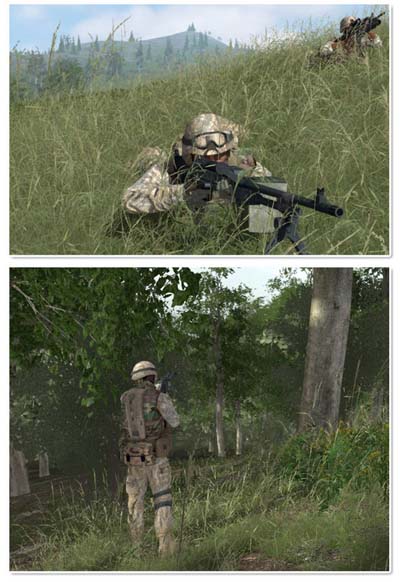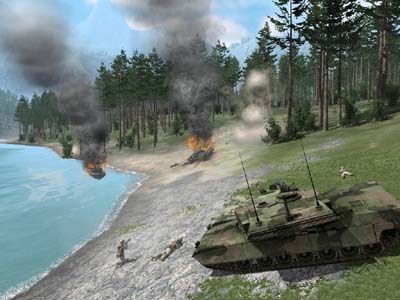Simulations and Simulators
- Simulations:
Virtual Battle Space (VBS)
VBS1
VBS1 is a small unit tactical decision simulation that allows a unit of up to platoon strength to simulate tactical operations in a 3D virtual environment. VBS1 provides each Marine with a first-person view of the battlefield from both a mounted and dismounted perspective. VBS1 includes realistic modeling of visual appearance for terrain, troops, vehicles, weapons, and manmade structures. It permits employment of individual, crew served, and vehicular weapon systems with supporting air and surface fires. VBS1 can be used as a rehearsal and visualization tool for live field training.
VBS1 Lite
A specially licensed version of VBS1 is available to Marines for personal use. VBS1 Lite is a single player version of VBS1 that may be used to design and save multiplayer scenarios that may be saved to a thumb drive and then take to the Battle Sim Center for use as a multiplayer unit training scenario. VBS1 Lite permits Platoon Commanders, Squad Leaders, and Fireteam Leaders to design training scenarios to meet specific training objectives for their unit's needs. Assistance in developing scenarios is available from Battle Sim Center Staff. Copies of the installation program on CD are available at the Battle Simulation Center.
VBS2
VBS2 is the next generation of tactical decision simulation for the USMC. VBS2 will be fielded in the third quarter of FY-2007 and features higher visual resolution, fully articulated human movements, interaction with inanimate objects (pick up, load, move, dig, etc), and HLA compliance for the ability to network VBS2 virtual training with constructive simulations such as JSAF, JCATS, or MTWS used for staff command post exercises.
 |
 |
MAGTF Tactical Warfare Simulation
The MAGTF Tactical Warfare Simulation (MTWS) is a simulation system that provides exercise control services and tactical combat simulation to support the preparation and conduct of tactical exercises. The system supports field exercises involving actual combat units, command post exercises involving only command staffs and exercises using a combination of combat units and command staffs. MTWS supports multisided, free play simulation to permit the creation of a wide variety of tactical situations to challenge the command staffs in the decision-making process. The MTWS simulation capabilities offer the full range of MAGTF combat, combat support and combat service support applications, including amphibious operations. Some of the capabilities simulated in MTWS are:
Ground target detection by visual, sound, sensor and ground radar means
Air target detection by visual, IR, SLAR and photographic means
Target destruction by ground engagement, and supporting arms (air, fire support, Naval gunfire, cruise missile, etc.)
Intelligence play from ground and air reconnaissance sources
Logistic play, to include resupply, repair and medevac
MTWS provides the functionality required for controllers and operators to interact during the actual simulation of an exercise. The system provides the controller and higher staffs the capabilities to initialize, control and replay exercises. It provides the capability to create and modify an exercise data base. Thus, the user is able to interact with the MTWS system in a meaningful manner to create realistic tactical scenarios.